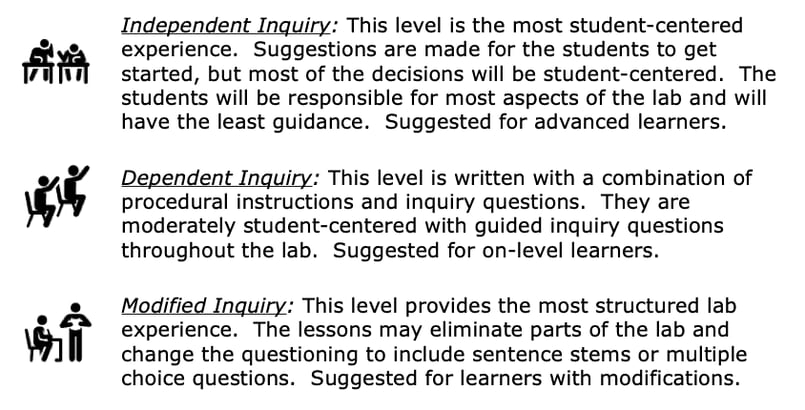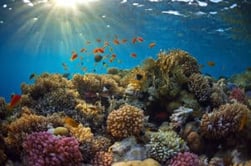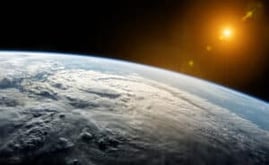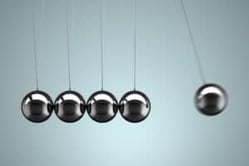Eclipses Inquiry Lab
Middle School Inquiry Lab on Eclipses
In this lab students will create a model with the Earth, Sun, and Moon to demonstrate and describe eclipses of the Sun and Moon.
Each inquiry lab will contain an essential question that will drive the lesson and make students think. For this lesson, the essential question is:
- How do the Sun, Moon, and Earth work together to cause solar and lunar eclipses?
BACKGROUND INFORMATION AND MATERIALS LIST:
Students will begin the lab by reading the essential question and background information. This can be done individually, as lab groups, or as a whole class. If you consider lab groups, you also might include some type of whole class formative checks before digging into the lab.

Materials List:
- clay
- 2 thin wooden dowels
- meterstick
- 2 binder clips
- flashlight (or Sun if non-cloudy day)
PROCEDURE:
For this lab, students will have to prepare their lab by making Earth and Moon models to clip to their meter stick. Moon should be 1/4 the size of the Earth. Using a flashlight, students are going to shine the beam of light from behind the Moon to cast a shadow on the Earth’s surface.
Students will draw a diagram of the Earth, Moon, and Sun in a correct position showing the Moon casting a shadow on the Earth. Students will then turn their meter stick so that when the beam of light is on, it is coming from behind the Earth to cast a shadow on the Moon’s surface.
Students will then draw a second diagram using the Sun, Earth, and Moon, except this time, their diagram will show the shadow on the Moon’s surface.
CHECK FOR UNDERSTANDING:
At this point in the lab, students will be checked for understanding by answering questions about their findings. Here are a few that come with the lab:
- During which phase of the Moon will a solar eclipse happen?
- What is blocking the sunlight during a solar eclipse?
- A lunar eclipse can happen when the Moon is in what phase?
- What is casting a shadow during a lunar eclipse?
CONCLUSION
Students will go back to the essential question and write a CER (Claim, Evidence, Reasoning) to conclude the lab. Once completed, students will reflect back on their learning by answering the following questions:
- What is the difference between a solar and lunar eclipse?
- Why don’t we have a solar eclipse every month?
MODIFIED AND INDEPENDENT INQUIRY VERSIONS
All of the Kesler Science inquiry labs come with three different modification levels. Each lab is differentiated using the icons below.
STANDARDS ALIGNMENT
NGSS: ESS1-1 – Develop and use a model of the Earth-Sun-Moon system to describe the cyclic patterns of lunar phases, eclipses of the Sun and Moon, and seasons.

Download Over $100 in FREE Resources
For Middle School Science
Simply create a login below and gain immediate access to a selection of our Kesler Science product line worth $100 - for FREE. There's a full version of every product type! You'll also join tens of thousands of middle school science teachers who receive timely tips and strategies straight to their inbox.





